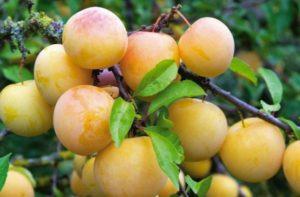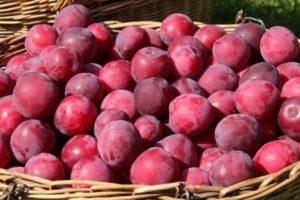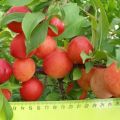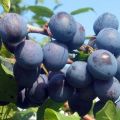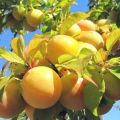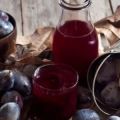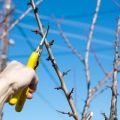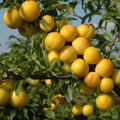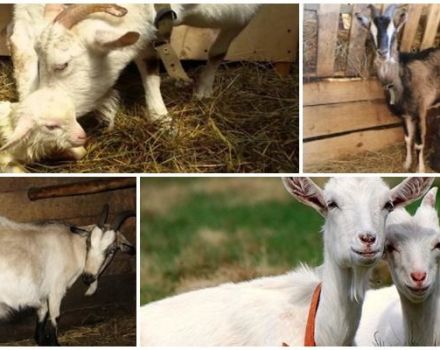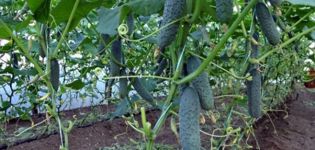Description of the types of plum varieties Renclode, benefits and harms, yield and cultivation
Even in a small summer cottage, the owner will certainly allocate space for growing fruit trees. In addition to apple and cherry trees, there is a piece of land for plums, which combine almost three hundred varieties. The Renclode plum family is a separate group that has a number of distinctive qualities. It is recommended to understand these features in order to facilitate the care of the planted tree.
Description of culture
A common feature of the Renclode variety is the compactness of the tree. In height, adult plants rarely exceed 4 m, crown diameter - up to 3 m. Due to its compactness, formative pruning is not carried out.
Another distinctive feature is the taste of the fruit. Regardless of the variety, the fruit is juicy and sweet, with a thin skin.
Advantages and disadvantages
Renclaude has many of the same virtues that seasoned gardeners know. The pluses of the fruit include:
- fruit taste;
- yield (it is easy to collect up to 40 kg of plums from one adult tree);
- external attractiveness;
- stability (plum easily tolerates low temperatures, rarely gets sick).
Renclaude also has a number of negative qualities. Among them, in the first place is the delicacy of the root system; with high humidity, decay and debate begin. Another disadvantage is that pollinating plants are required.
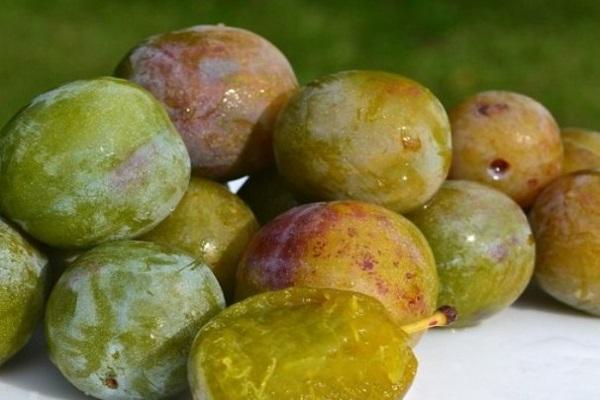
Characteristics of the tree
Familiarity with the characteristics of trees will help provide them with the right care and avoid unwanted mistakes. Most members of the Renclaude family have common qualities, so studying them will not cause inconvenience.
Resistance to negative temperatures
Most of the drains of the Renclaude family can easily withstand low (up to 35 degrees) temperatures. For gardeners in regions with unstable climatic conditions, it is better not to risk trees and use a winter shelter.
Disease immunity
The Renclaude family is considered the leader in immunity among varieties. Trees are rarely affected by diseases of fruit crops. Despite this, it is not recommended to be careless about preventive measures - it is better to carry out treatment with chemicals or folk remedies regularly, starting in early spring.
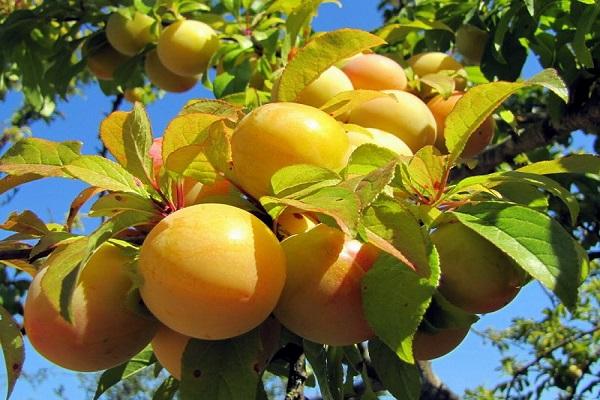
Yield
Renclode is a prolific family, but on condition that pollinators have been planted.Otherwise, most of the representatives of the variety will be gifted with a low yield or even refuse to bear fruit.
Pollinators of culture
Any varieties are recommended for pollination, the main thing is the coincidence of flowering dates. Experienced gardeners prefer White Honey, which is suitable for pollination.
The beginning of fruiting
Fruiting occurs 3-5 years after planting young trees. Much depends on the region - in warm areas, with proper care, plums can appear much earlier.
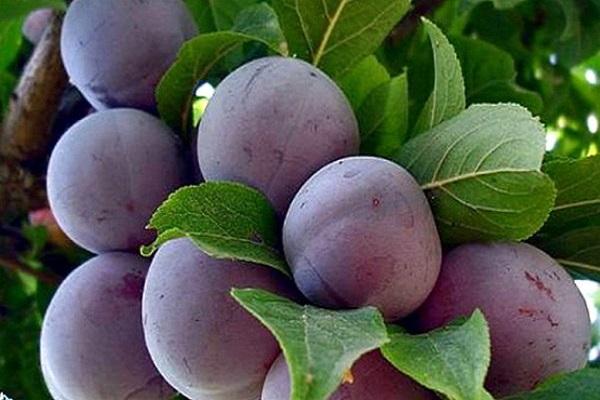
Terms of ripening and collection of plums
Plums usually ripen in the last month of summer, but some varieties have earlier dates. The petioles on the fruits are quite strong, but shedding cannot be avoided with gusts of wind.
The benefits and harms of eating fruits
Plums are a source of vitamins, nutrients, the use of fruits allows you to make up for the lack of some elements. Do not abuse, at high doses it is easy to cause irritation of the intestines (constipation or diarrhea), nausea, which easily develops into vomiting.
Comparative table of varieties
Each variety of Renklode has its own advantages and disadvantages, it is better to understand them even before purchasing a seedling.
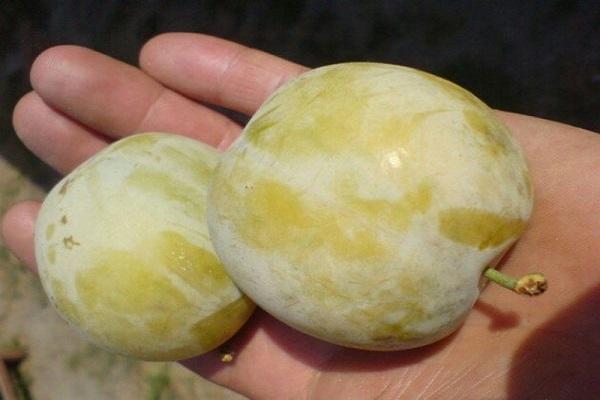
Soviet
The age of the Soviet variety has already reached three decades, but the tree, thanks to its abundant fruiting, does not lose popularity. The height of an adult plant does not exceed 3.5 m, the weight of the fruit is up to 45 g. Plums are sweet, there is no sourness. The disadvantage is increased sensitivity to polystygmosis.
Collective farm
Recommended for growing in regions with a stable climate. The tree is not tall (up to 2.5 m). Small plums - only up to 20 g. The skin is green-yellow; under the sun's rays, a slight blush is formed. The taste is pleasant, refreshing, there is a slight sourness.
Yellow
The name of the plum variety speaks for itself - the shade of the skin and pulp is yellow, with a slight blush. The fruits are juicy, have excellent taste, without sour aftertaste. Average yield - up to 30 kg per adult plant.
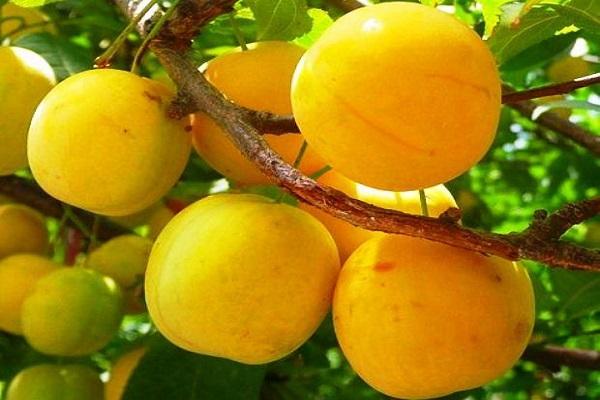
Early
The ripening dates for the variety are in the middle of summer. In colder regions, the harvest is delayed by 1-2 weeks. Differs in fruiting - an adult plant presents almost 50 kg of sweet plums. The tree is considered a giant among a large family, it grows up to 6 m.
Altana
Altana's height is up to 6.5 m. Fruits are large (exceed 45 g), have a slightly flattened laterally. The shade of plums is salad, there is a bright blush. The peculiarity of the variety is that it is undemanding to the composition of the soil, the plant grows and develops easily even on salty soils.
Tambov
Plum easily tolerates 30-degree frosts, although some shoots can freeze slightly. The fruits are small, with good taste. Most often, the variety is used in winemaking, although Tambovskiy has shown itself to be on the good side in conservation.
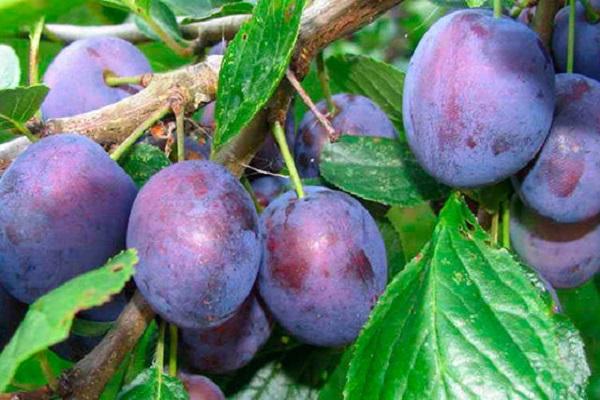
Karbysheva
A distinctive feature of the Karbyshev variety is its growth rate. The tree is growing rapidly, so you will have to carry out regular pruning. The first fruits are striking in size - up to 50 g. Over time, the mass of plums decreases to 35 g. Honey pulp, therefore, is especially appreciated by cooks.
Green
Cultivated only in warm regions. The tree is spreading and high, in height often exceeds 7 m. The crown is lush - up to 8 m. Plums are small (do not exceed 20 g), yellow-green in color. The pulp is transparent, sweet, juicy.
White
Even an adult plant rarely exceeds 4 m in height. White fruits weigh up to 40 g. The variety is valued for its taste, the pulp practically melts in the mouth. White is distinguished by endurance, easily tolerates frost and high temperatures, and is rarely affected by diseases.
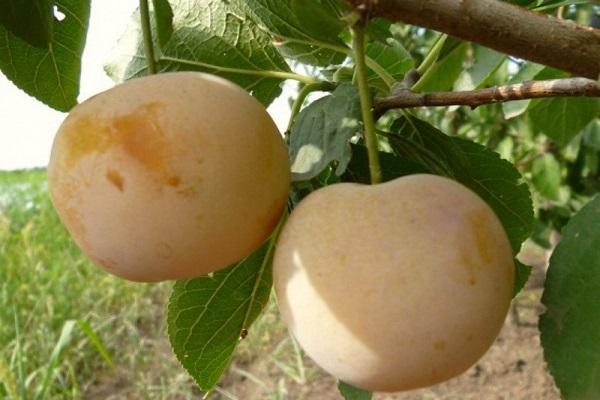
Blue
Plum is not frost-resistant, but it has increased immunity, rarely affected by diseases.The fruits are rather sour, the weight rarely exceeds 35 g. The skin is blue, covered with a dense bluish bloom.
Michurinsky
An adult plant is not impressed with its growth, rarely exceeds 3.5 m. Plums are small, up to 30 g, have a purple surface, juicy sour yellow pulp. The blue variety Renkloda is self-fertile, but in the presence of a pollinator, it will give the maximum amount of plums - up to 55 kg.
Kuibyshevsky
Recommended for growing in northern regions. An adult plum grows up to 6 m, the fruits are quite small - only 20-25 g. The skin is yellowish, the pulp is lighter. The taste is quite pleasant, but there is a slight sourness.
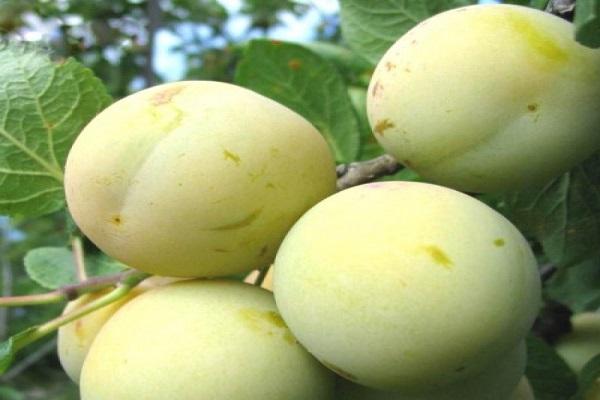
Leah
One of the latest varieties. In cooler regions, the fruits ripen until early September. Disadvantages of Leah are small plums, the mass of which does not exceed 12 g. The stone is separated extremely poorly, therefore it is better to use the variety for conservation.
Tenkovsky
Fruiting occurs in the last days of August. The fruits are dark red with numerous small dots. The taste of the pulp is sour, the variety is planted by gardeners for whom keeping quality is important, if the rules of storage are observed without loss, the plums will lie for several months.
Ulena
A spreading crown, a powerful trunk, large (up to 45 g) fruits, resistance to frost and diseases are Ulena's distinctive features. Plums, even in warm conditions, lie up to a week without being spoiled.
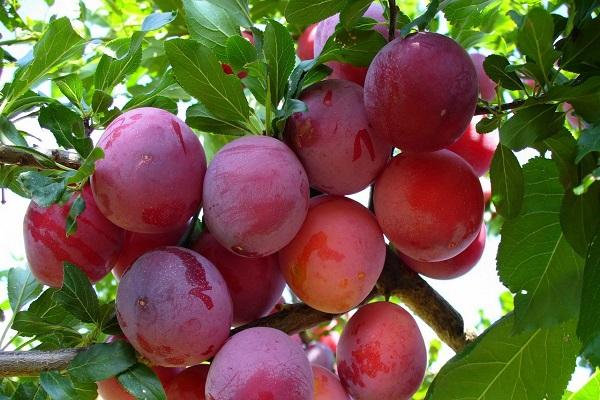
Presidential
It is recommended to grow the variety in warm or medium-sized regions, ripening occurs in September, so in cold areas the plums will remain unripe on the trees. Plums are very large - up to 55 g. The taste is good, sweet, without acid.
Enikeeva
Yenikeeva will not please with fruiting, from one adult plant only 12-15 kg. Medium-sized plums - up to 30 g. A distinctive feature of the variety is that the buds do not freeze even at low temperatures.
Beauvais
Plums have a bright greenish-yellow hue, sweet pulp, exuding a pleasant smell of nutmeg. The advantage of the variety is long shelf life and transportability.
The main drawback of the variety is the untidiness of the crown. Branches grow in different directions, chaotically, so you can't do without regular pruning.
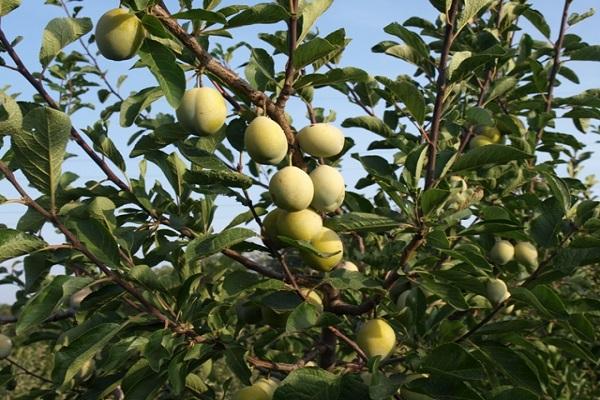
Kharitonova
You should not experiment and grow Kharitonova in the northern regions, the Renklode variety has poor endurance, the tree easily dies even at 10-15 degrees of frost. Plum is distinguished by its yield (up to 60 kg per adult plant) and fruit weight (up to 45 g).
Kursakova
The tree is medium in size, the fruits are fleshy, large (slightly more than 30 g). Red skin, golden pulp. The plant tolerates unstable temperatures well, is not afraid of frost and drought.
The Renclaude family never ceases to amaze with the advantages of plums, almost every variety has an excellent taste, yield, and stable fruiting. Don't forget about pollinators, which will certainly increase the number of plums. In order for the tree to thank as much as possible for its care, it is better to familiarize yourself with the characteristics of the variety you like in advance and not make mistakes in its cultivation.
